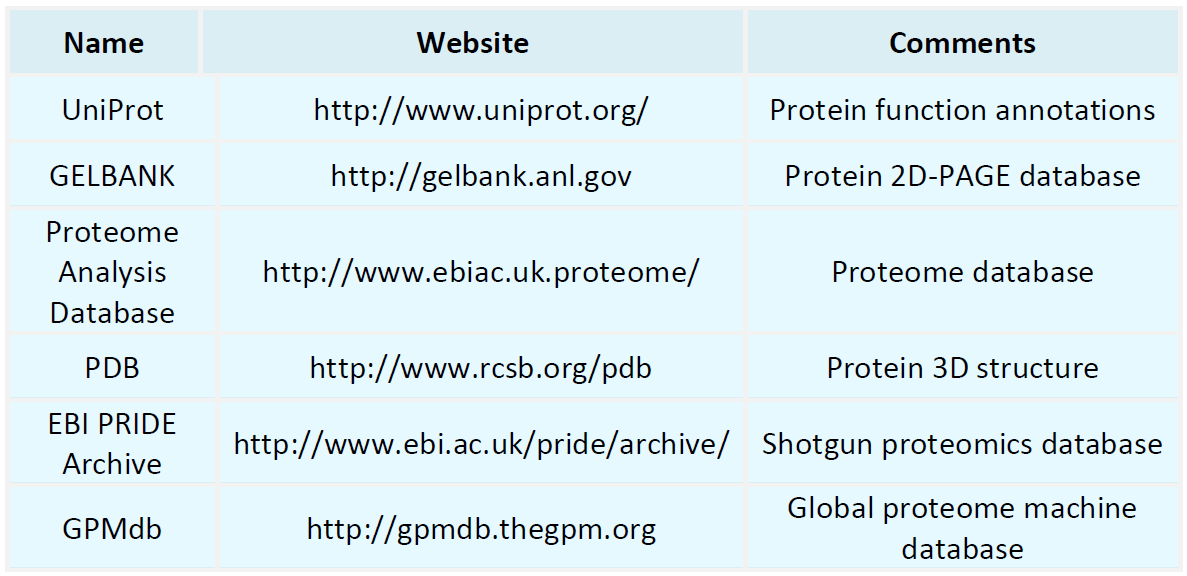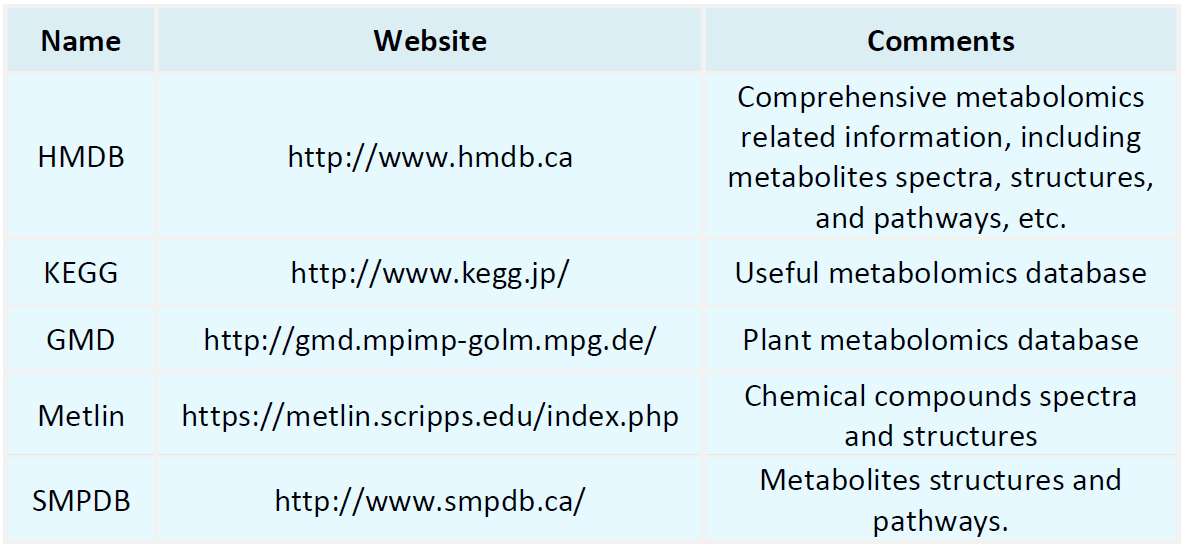Resources
Proteomics Databases

Metabolomics Databases

-
• Principles and Workflow of Shotgun Proteomics Analysis
Shotgun proteomics is one of the most extensively applied protein identification approaches in contemporary life science research. It plays a pivotal role in diverse domains, including elucidation of disease mechanisms, biomarker discovery, and drug target identification. As a high-throughput, untargeted analytical strategy, shotgun proteomics enables the simultaneous detection and identification of thousands of proteins within complex biological samples, serving as a powerful tool in systems biology.......
-
• Peptidomics vs Proteomics: A Comprehensive Analysis of Their Advantages and Limitations
Proteomics and peptidomics are two essential technologies in life science research. Both are omics-based approaches focusing on protein-related molecules. However, they differ substantially in research targets, methodological workflows, and application domains. Rather than being mutually exclusive, proteomics and peptidomics are complementary. A comprehensive comparison of their respective strengths and weaknesses will continue to provide high-quality data and interpretive support, fostering innovatio......
-
• Comprehensive Strategies for Characterizing Protein Purity and Homogeneity
In the biopharmaceutical industry, rigorous quality control of protein therapeutics is essential, with purity and homogeneity serving as two critical quality attributes. However, the distinction between these parameters and their respective analytical methodologies often remains unclear to many researchers and industrial R&D teams. Protein Purity: Emphasis on Impurity Content Protein purity refers to the proportion of the target protein within a given sample, serving as a fundamental indicator of non......
-
• Applications of Peptide Sequencing in Biomedicine, Agriculture, and Biotechnology
Peptides, as essential functional molecules in biological systems, play critical roles in signal transduction, immune response, enzymatic regulation, and other vital processes. The rapid advancement of peptide sequencing technologies—particularly in biomedicine, agriculture, and biotechnology—is accelerating the transition from molecular-level investigations to practical applications across these industries. Technical Background and Principles of Peptide Sequencing Peptide sequencing refers to the de......
-
• Principles, Advantages, and Applications of HPLC-Based Protein Purity Analysis
In the fields of life sciences and biopharmaceuticals, protein purity is a critical parameter for assessing sample quality and ensuring the reliability of downstream applications. High-performance liquid chromatography (HPLC), owing to its superior resolution, reproducibility, and sensitivity, has emerged as a pivotal technique for protein purity assessment. This article outlines the fundamental principles of HPLC-based protein purity analysis, its analytical advantages, and key application scenarios ......
-
• A Comprehensive Guide to the Determination of Protein Purity and Quantity
Proteins are fundamental biomolecules involved in a wide range of biological processes, from basic metabolism to complex signal transduction. In both life science research and the biopharmaceutical industry, accurate determination of protein purity and concentration is not only critical for ensuring the validity of scientific conclusions but also directly influences downstream applications and process development. Importance of Determining Protein Purity and Concentration In protein research and appl......
-
• How Does ABPP Contribute to Research on Tumors and Neurological Disorders?
As research on disease mechanisms increasingly advances toward cellular functions and molecular dynamics, the limitation of proteomics, capable of detecting expression but not activity, has become more evident. Particularly in complex disorders such as tumors and neurological diseases, alterations in protein functional states often provide more accurate insights into biological processes than changes in expression levels. Activity-Based Protein Profiling (ABPP), a representative technique in functio......
-
• How Can Mass Spectrometry Enable Comprehensive Analysis of Glycopeptide Structures?
Glycopeptides, composite molecules that link glycans with peptide backbones, are widely distributed in membrane proteins, secretory proteins, and immune-related proteins. They play pivotal roles in maintaining protein stability, regulating signaling pathways, and mediating immune recognition. Their structural complexity imposes stringent demands on analytical methodologies. Owing to its high sensitivity, high resolution, and capability for molecular-level characterization, mass spectrometry has become......
-
• What Are Glycosylation Sites?
A glycosylation site refers to a specific amino acid residue within a protein molecule where glycosylation modification occurs. At these sites, enzymes catalyze the covalent attachment of sugar moieties (such as oligosaccharides) to proteins, thereby generating glycoproteins. Glycosylation represents a critical post-translational modification (PTM) that profoundly influences protein structure, stability, function, and intercellular communication. In life sciences and biopharmaceutical research, the id......
-
In the post-genomic era, proteomics has emerged as a central tool for deciphering the complexity of biological systems. Among the various post-translational modifications (PTMs) that have increasingly attracted the attention of researchers, glycosylation stands out as one of the most complex and challenging. Glycosylation, a widespread form of PTM in eukaryotic cells, is found on nearly all membrane and secreted proteins. It not only regulates protein stability, subcellular localization, and half-life......
How to order?







